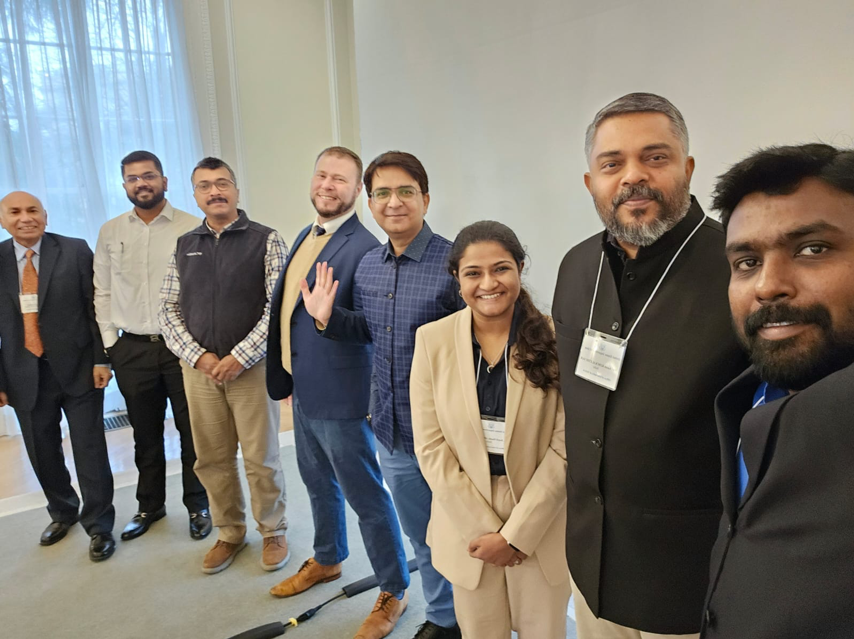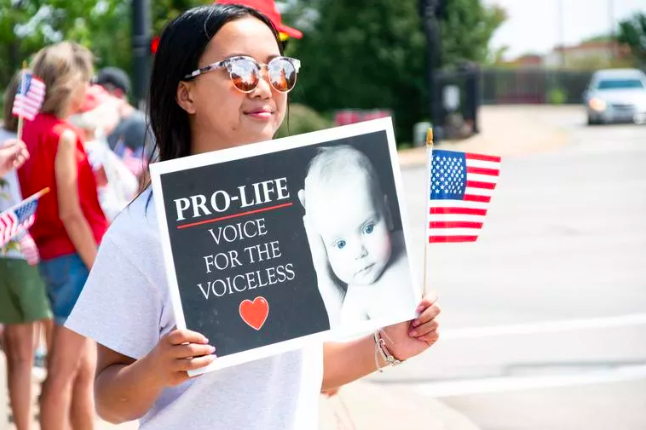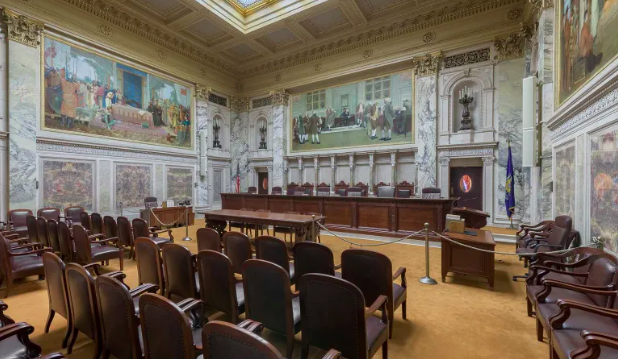Six countries in Europe have now passed nationwide or partial bans on face-veils, and others have legislation pending for additional bans. Speaking critically of either the bans or the Muslim practice of veiling engenders a firestorm of debate, as former Mayor of London and Secretary of State for Foreign and Commonwealth Affairs Boris Johnson did with an article in the Telegraph denouncing the ban in Denmark, while also bluntly criticizing in demeaning fashion the practice of covering the face.
The response to the controversy has largely focused on questions of free speech, with the Equality and Human Rights Commission (EHRC) labeling the remarks as “inflammatory and divisive” but not within its jurisdiction to prosecute.
Yet, what of the more fundamental question about the public expression of religious belief? Is it appropriate, as the European Court of Human Rights said in its 2014 ruling in S.A.S vs. France, that veiling must be restricted in favor of the principle of “living together” and promoting “tolerance and broadmindedness without which there is no democratic society.”
What are the implications of religious freedom for protecting the right to public expressions of faith, even those expressions which may seem to resist cultural assimilation?
To see all posts in this series visit: Debating Burqa Bans
In an August 5 column in the Daily Telegraph, former Foreign Secretary Boris Johnson expressed his personal views about the burqa, the veil worn by a minority of Muslim women which covers the body and a substantial portion of the face. Johnson wrote that it is “absolutely ridiculous” that women “should choose to go around looking like letter boxes.” He also said girls and women wearing the burqa look like a “bank robber.” His comments sparked outrage and heated debate in the British press. Notwithstanding the bluster, Johnson’s larger point was to criticize the legal prohibition on the wearing, in public, of “any garment that hides the face” in Denmark which had gone into effect only a few days before. (No such prohibition currently exists in the United Kingdom.) By implementing such a ban, Denmark became one of a handful of countries in Europe to prohibit the practice since France did so in 2011.
A few days later, in a piece titled “Confessions of a Burka-Phobe,” Commentary columnist Sohrab Ahmari responded to the reaction against Johnson. Ahmari insisted that anxiety and discomfort about the burqa (or more accurately, the “niqab,” which covers the face but not the eyes and is more commonly worn by a minority of Muslim women in the United Kingdom) are justified: the “Average Joe” and his European counterparts “have a right to deplore the burka.” And Johnson, he wrote, “has his finger on the popular pulse” and rightly underscored this anxiety. To show solidarity with Europeans who are understandably “anxious” about the niqab in the public square, Ahmari confesses that he, too, is unnerved by it even though he was born and raised in the Islamic Republic of Iran where Muslim veiling was “not alien” to him. “I never quite got used to eyes without a face—to the encounter with a hidden subject, who was free to gaze into my features but who deflected my attempts to reciprocate her gaze,” he writes. As evidence of this unsettling phenomenon, he references an old cult horror film from 1960—Eyes Without a Face— “which attests to the fact that most people find free-floating, disembodied, faceless eyes deeply disturbing.”
Theatrics aside, Ahmari missed a critical opportunity to engage in a constructive debate about the niqab and the limits of religious liberty and pluralism in the public square. Instead he turned to seemingly more pressing issues: the bullying and silencing of free and honest debate in Europe by progressive liberals. “Does liberal opinion permit Europeans to discuss the burka openly, honestly, and fearlessly?” he asks. “The answer is almost certainly ‘no,’ judging by the furious reaction that greeted Boris Johnson’s recent remarks,” he answers. The Johnson controversy, Ahmari would have us believe, has little if anything to do with “Islamophobia,” anti-Muslim bigotry, or the right to manifest one’s religious beliefs. It has everything to do with “a prohibition against expressing any discomfort, enforced on pain of social ostracism and joblessness” by “illiberal liberalism.” A prohibition that is “a recipe for populist backlash.”
This is not to say that the controversy does not implicate free speech concerns. After publication of Johnson’s column, London’s Metro Police issued a statement saying that his statements did not “reach the bar” for a criminal offense pursuant to the United Kingdom’s hate crime protections. Despite stringent hate speech laws in the United Kingdom, there has been robust and ongoing discussion in the press and elsewhere about the face veil and similar forms of religious garb. And all of it is happening with few, if any, prosecutions based on hate speech laws.
The debate has been heated on both sides. Some who have endorsed bans on face veils in public, or commented on them in a manner similar to Johnson, have been “raked over the intersectionality coals” and accused of fanning the flames of anti-Muslim bigotry. This is not surprising given recent developments in the United Kingdom post-Brexit, and a worrying rise in nativism, xenophobia, and anti-immigrant animus in the region. Words matter, and they matter more when they flow from the pen of a high-profile politician and former government official. Indeed, in the aftermath of Johnson’s column, several newspapers published reports indicating there has been a rise in harassment of women wearing the niqab on the streets, including some incidents where attackers used Johnson’s language. Regardless of whether there is a causal or correlative phenomenon at play here, Muslim women’s anxiety about imminent attacks is certainly as “real enough” as Johnson and Ahmari’s anxiety about the niqab. Free and honest debate does not insulate the speaker from social repercussions, such as harsh criticism. Nor does it prioritize the anxiety of some over the discomfort of others.
Surely, Ahmari would agree with this assertion. Why then, did he choose to focus on the issue of free speech without mentioning the obvious religious liberty implications of “burqa bans”?
While restrictions on wearing niqabs and other forms of hijab that cover the face in public would likely be struck down by American courts as unlawful infringements on the free exercise of religion, such laws have survived judicial scrutiny in Europe. In the famous S.A.S. v. France case in 2014, the European Court of Human Rights held that France’s 2011 law banning all face coverings in public did not violate Muslim women’s right to freedom of religion, privacy, expression, or equality despite the fact that they were disproportionately affected by the prohibition. Interestingly, the court rejected the French government’s arguments that the ban was justified to promote gender equality or the dignity of women, and instead defended its ruling on the notion that France’s prohibition was a lawful limitation to protect “the rights and freedoms of others.” That right, it argued, was connected to the French principle of vivre ensemble, or “living together.” According to the Court, France’s ban sought to “protect a principle of interaction between individuals, which in its view is essential for the expression not only of pluralism, but also of tolerance and broadmindedness without which there is no democratic society.” The Court reaffirmed this rationale by upholding a similar ban in Belgium last year.
The decision has received much criticism from human rights groups who maintain that no right of “living together” exists in either French or international law; the ban is discriminatory because it purposefully targets France’s Muslim minority community; and that it presents
troubling questions regarding the government’s ability to compel integration, assimilation or interaction by interfering with the core privacy and autonomy rights of religious and non-religious individuals alike. Yet the right to not integrate, assimilate or interact—to both physically and spiritually separate yourself, your family, and your faith community from society-at-large without being compelled to do so by the government—is also a cornerstone of the right to religious liberty. In fact, the right to erect barriers between one’s faith community and others has been critical to the cohesion and survival of some minority communities, including haredi Jews and the Amish. But its importance is not limited to separatist minority faiths and encompasses women who choose to wear the niqab in public. Interestingly, studies suggest that while face veils limit certain types of social interactions by design, they actually allow women who would otherwise limit their social interactions with others the opportunity to engage more confidently and vigorously with society-at-large. For these women, a prohibition would have the opposite effect of protecting the “principle of interaction between individuals.”
The right not to assimilate as a manifestation of bearing faith has also gained much traction among religious conservatives in the United States who increasingly see themselves as an embattled minority community on the losing end of the “culture wars.” In recent years, the importance of protecting the right to the free exercise of religion has been reconceptualized as the right to conscientious objection to opt out of generally applicable laws or regulations that significantly burden one’s faith, even in cases where exemptions may cause material or dignitary harms to others. In practice, this has meant that religious objectors have increasingly relied on a panoply of other rights and legal strategies to safeguard their religious liberty right to resist cultural assimilation: the right to privacy not to allow the government to interfere in intimate decisions regarding your faith; the right to autonomy not to be made complicit in the sinful acts of others; the right not to associate with those whose ideas or beliefs are incompatible with your faith; and the right not to be compelled to speak in support of views or conduct that violate your religious beliefs.
As a recent convert to Catholicism, Ahmari understands the importance of resisting cultural assimilation as foundational to the cause of religious liberty. In fact, he has enthusiastically embraced it, writing numerous articles highlighting the importance of conscientious objection in the face of anti-religious animus and forced cultural hegemony promoted by secular liberalism. Earlier this year, for example, he wrote a series of articles in Commentary lamenting the “bleak future of religious liberty in the U.K.” as reflected in an allegedly coordinated government campaign to force religious schools to conform to secular standards. In one article, he criticized British regulators for going after religious schools, including an Ultra-Orthodox Jewish girls’ schools in London, as “part of a larger campaign against religious education in the U.K.” He concluded another piece by remarking: “If and when totalitarianism arrives in the West, it will carry the grammatically appalling banner of ‘equalities.’”
In another column published in the New York Times, Ahmari expressed dismay at comments Senator Diane Feinstein and other members of the Democratic Party made to Amy Coney Barrett, a judicial nominee for the United States Court of Appeals for the Seventh Circuit. “Dogma and law are two different things,” Feinstein said during the confirmation hearing. “And I think in your case, professor, when you read your speeches, the conclusion one draws is that the dogma lives loudly within you, and that’s of concern.” Ahmari argued that these assertions smacked of “anti-Catholic bias” because they implied that Barrett would be incapable of separating her work on the bench from her religious or ideological beliefs. “[A]s with other forms of racial or religious animus,” Ahmari remarked, “one needn’t always use an explicit epithet to arouse ugly emotions.” Later in the piece he wrote: “[F]or some progressives, it isn’t enough to have won most of the cultural and policy battles of the past several decades. Even the remnants of the other side, in people’s minds and consciences, must submit to maximalist progressive claims.” And in the wake of the recent Masterpiece Cakeshop ruling by the United States Supreme Court, decided on anti-religious animus grounds in favor of a religious objector, he wrote:
[T]he inner logic of today’s secular progressivism puts the movement continually on the offensive. A philosophy that rejects all traditional barriers to individual autonomy and self-expression won’t rest until all ‘thou shalts’ are defeated, and those who voice them marginalized (emphases added).
In each of the three articles referenced above, Ahmari included at least a passing reference to the Muslim community within the larger context of religious liberty. Yet despite his acknowledgment of the right to manifest one’s faith by resisting the secular demands of society-at-large, he chose not to delve into the serious religious liberty and minority rights implications affecting Muslims when the opportunity presented itself. At one point, Ahmari gets close to addressing the issue on its merits when he asks: “Does all this mean that I would support a blanket ban against the full-face veil?” “Probably not,” he answers. “I wouldn’t want to give state agents the right to regulate religious practices in Europe, because I’m sure that those agents would go out of their way to target faithful Jews and Christians,” he wrote, “not least to shield themselves from the same charge of Islamophobia that they casually hurl at the likes of Johnson.”
His response is utterly disappointing from the point of view of religious liberty because it betrays a clear bias: the right of a Muslim to resist assimilation and manifest her faith is really only important insofar as it protects the right of Jews and Christians to be free from arbitrary governmental interference. In that sense, Ahmari’s response essentially mirrors the argument made by Johnson for why banning the niqab is counterproductive: “if you go for a total ban, you play into the hands of t
hose who want to politicise and dramatise the so-called clash of civilisations; and you fan the flames of grievance.” But it is also rather revealing, especially if read in conjunction with his previous sentence: “As much as I fret about the incohesive society bred by the burka’s presence in Europe, I also worry about the Continent’s high-handed secular progressivism (emphases added).”
And there’s the rub.
Ahmari’s piece, it turns out, is not really about religious liberty or even the right to express discomfort or anxiety with the niqab, for that matter. It is seemingly about something else entirely: the nexus between Muslim immigration to Europe, the rise of Eurocrat secularism, and what it all means for “social cohesion” and traditional Judeo-Christian values that define “Western Civilization.”
From that perspective, Ahmari’s decision to defend Johnson’s remarks about the niqab at the expense of a Muslim woman’s religious liberty right not to assimilate is neither surprising nor inconsistent. It is simply honest (and smart) politics. “[M]ore than most of the dullards who rise to the higher echelons in Europe,” he writes, Johnson “has his finger on the popular pulse.” He “knows that anxiety over the burka courses through the whole European body politic.” And that anxiety is both “real” and “legitimate, because the sight of the niqab in the public square crystalizes the sense that European immigration and assimilation policy has gone horribly wrong (emphasis added).” “Concluding that this is so,” he writes, “isn’t tantamount to hatred.”
Ahmari’s concluding paragraph leaves little doubt about what really concerns him: “The liberal reflex to silence, in the name of tolerance, those who insist on the real virtues and character of European civilization will only further radicalize the opposition (emphases added).” To drive the point home, he ends his defense of free speech by equating the oppressive nature of “liberal illiberalism” with “a vast burka forcibly wrapped around the European mind.”
All of this makes the reader genuinely wonder whether Ahmari is really worried about a “populist backlash,” or secretly desirous of one. In his column published immediately after the Masterpiece Cakeshop decision, Ahmari wrote that “it’s not enough for social conservatives to play religious-liberty defense.” Instead he suggested that religious conservatives “offer a substantive politics of the common good.” It is not readily clear what policies reflecting “the common good” would look like, but it is difficult to see how compromising core religious liberty principles at the expense of anxiety over Muslim integration in Europe can contribute to that objective. If staunch (or tepid) religious liberty advocates cannot pass the simple litmus test presented by “burqa bans” that are increasingly being enforced in Europe, how can we expect others to defend the fundamental right to resist cultural assimilation as a manifestation of one’s faith?
Ultimately, Ahmari has the right to believe whatever he wants to believe. He has the right not to be “accustomed” to the niqab. He has the right to prioritize the religious liberty rights of Christians and Jews over those of Muslims. He has the right to worry about Muslim immigration and its effects on “social cohesion” in Europe. And he has the right to lament a foregone yesteryear where powerful State and Church institutions not only promoted but enforced cultural hegemony by imposing the values of Judeo-Christian traditionalism on society-at-large.
But others have the right to criticize these views and question the motivations behind them. That is not illiberalism of intolerant liberalism, or the “reflex to silence, in the name of tolerance,” as Ahmari puts it. Nor is it an inquisition. It is merely the vigorous exercise of the same fundamental right to freedom of expression that he, Johnson, and many Average Joes are already engaged in on both sides of the pond. A fundamental right, which along with religious liberty, continues to form the foundation of the “Western Civilization” Ahmari mourns is no more.
Faraz Sanei is a Visiting Instructor of Clinical Law at the Benjamin N. Cardozo School of Law and a former legal advisor to the United Nations Special Rapporteur on freedom of religion or belief. He would like to thank Asma Uddin and the Religious Freedom Institute staff for their thoughtful comments and suggestions for this piece.
All views and opinions presented in this essay are solely those of the author and publication on Cornerstone does not represent an endorsement or agreement from the Religious Freedom Institute or its leadership.
THE RFI BLOG

Be More Faithful, Become More Resilient: An Invitation to Religious Institutions

How Soccer Reveals Different Meanings Of ‘Secular’ In France And The US

RFI’s Ismail Royer Meets with Delegation from India

Protecting the Unborn, Mothers, and Medical Ethics: The Stakes of Arkansas’ Amendment

Wisconsin Supreme Court Punishes Catholic Charities for Serving Everyone
CORNERSTONE FORUM

Public Bioethics & the Failure of Expressive Individualism

Religious Liberty in American Higher Education

Scotland’s Kate Forbes and the March of Secularism

70 Years of Religious Freedom in Sweden: Prospects and Challenges


